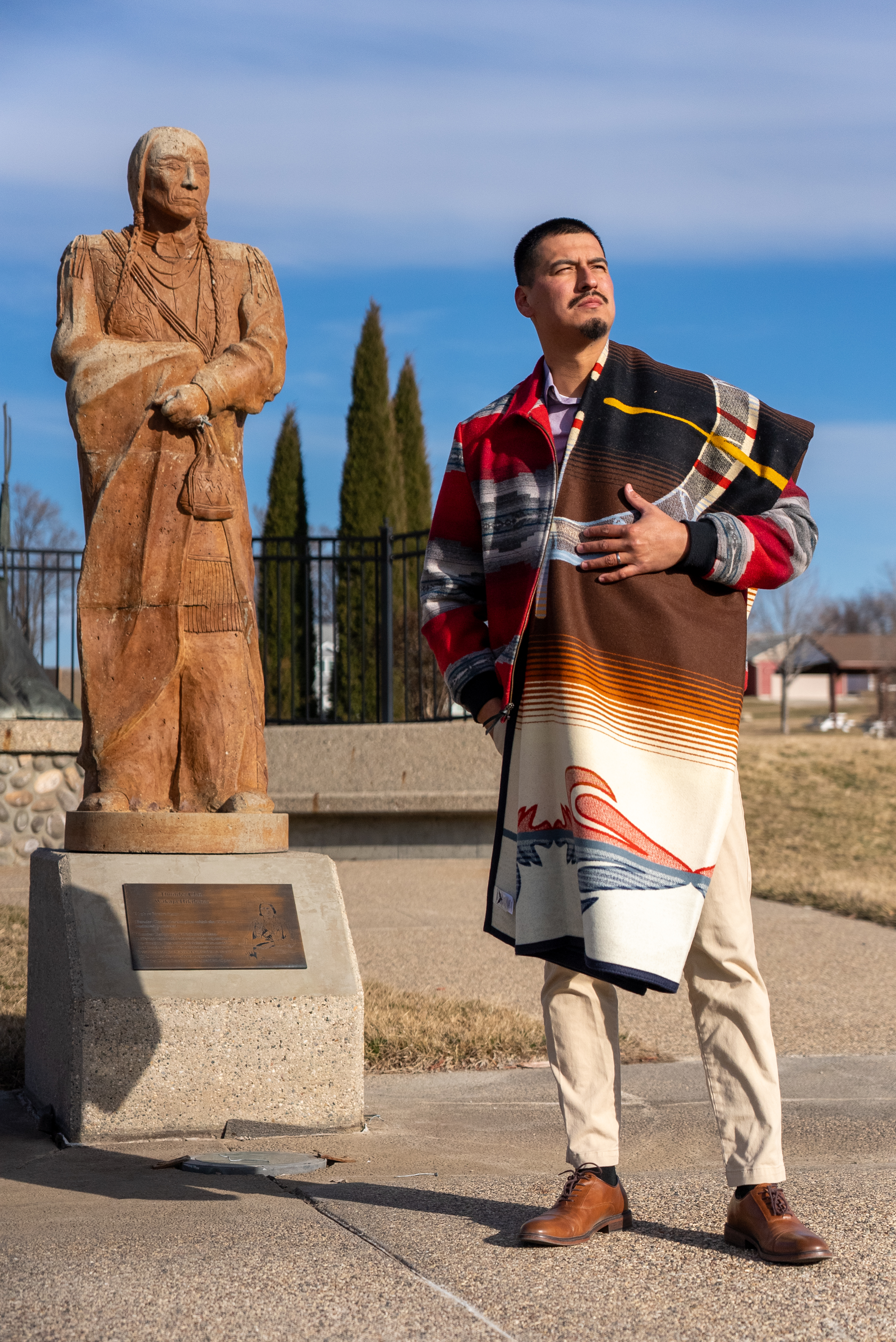
- Details
- By Native News Online Staff
The latest Tribal College Blanket Design, Drum Keepers, is now for sale.
For more than 20 years, the American Indian College Fund has teamed up with Pendleton Woolen Mills’ to raise funds for annual Native students scholarships. During the past two decades, more than $2.5 million have been raised.
This year's winner Drum Keepers was designed by Trey Blackhawk (Winnebago), a graduate of Little Priest Tribal College with a degree in liberal arts who is currently working on an applied sciences degree.
Drum Keepers was selected from 59 submissions. As the winning designer, Blackhawk will receive a $5,000 scholarship, $2,000 for books and incidentals, and six blankets for his design portfolio. Troy Tso (Navajo) and Cydnee Shangreaux (Oglala Sioux) placed second and third in the contest respectively. Tso’s Directions Home blanket earned him a $2,500 scholarship and $500 cash prize. Shangreaux’s Morning Storm crib blanket design won her a $1,500 scholarship and $250 cash prize.
“I want to keep the songs alive that have been sung for many generations in our tribe. There are not many of us that sing, and I wanted to be a part of that percentage that carries on the knowledge of these songs we sing. I tell the younger generation to start learning how to sing and know these songs, as these songs make us who we are,” Blackhawk said.
Traditional songs were the inspiration for Blackhawk’s design Drum Keepers, which he said holds meaning for all tribes, as each uses the drum in some way. He wondered how the traditional songs of each community had been preserved and passed down, and wanted to create a piece that reflected the importance of the drum that gives life to the traditional songs that are sung.
The design includes 12 tipis for the 12 clans of the Winnebago. The color of the design shows both day and night to signify those who hold knowledge keep the memory of them forever. The Ho-chunk applique on the outside of the tipis, which is a popular applique for dancers’ regalia, signifies the women of the tribe. Blackhawk said the women are important knowledge-keepers of certain songs, and the memory of singing Winnebago songs with his grandmother one last time before she stopped due to cancer was on his mind when working on this design.
“This design holds valuable meaning to every tribe but more importantly to me,” Blackhawk explained. His lived experiences and culture are certainly clear throughout. Among the other elements tied to his identity are the drumsticks, which he designed based on an image of a drumstick he owns.
More Stories Like This
Native Students Can Win $5,000 Scholarship, International Distribution in Pendleton Design ContestAmerican Indian College Fund Raises Alarm Over Plan to Shift Native Programs Away From the Dept. of Education
MacKenzie Scott Foundation Gives $5 Million Contribution to Little Priest Tribal College
Tribal Leaders Push Back on Dismantling of U.S. Department of Education
American Indian College Fund Names 12 Student Ambassadors for 2025–26
Help us defend tribal sovereignty.
At Native News Online, our mission is rooted in telling the stories that strengthen sovereignty and uplift Indigenous voices — not just at year’s end, but every single day.
Because of your generosity last year, we were able to keep our reporters on the ground in tribal communities, at national gatherings and in the halls of Congress — covering the issues that matter most to Indian Country: sovereignty, culture, education, health and economic opportunity.
That support sustained us through a tough year in 2025. Now, as we look to the year ahead, we need your help right now to ensure warrior journalism remains strong — reporting that defends tribal sovereignty, amplifies Native truth, and holds power accountable.
 The stakes couldn't be higher. Your support keeps Native voices heard, Native stories told and Native sovereignty defended.
The stakes couldn't be higher. Your support keeps Native voices heard, Native stories told and Native sovereignty defended.
Stand with Warrior Journalism today.
Levi Rickert (Potawatomi), Editor & Publisher

